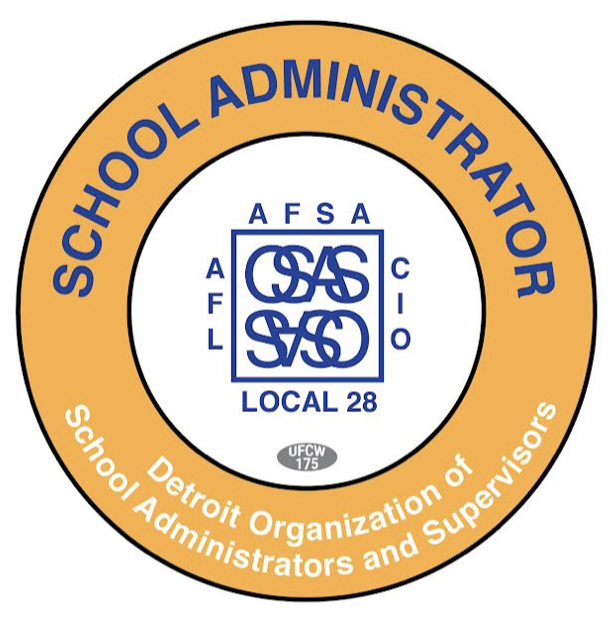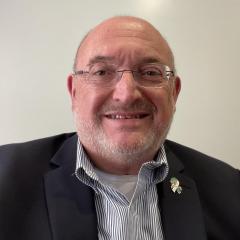“Almost nobody asks school leaders how they’re doing,” says Dr. Anthony Salvatore, former administrator in Newtown Public Schools, current AFSA general vice president and co-president of the Connecticut Federation of School Administrators. In the aftermath of COVID-19 and recent school shootings, Dr. Salvatore surveyed school leaders in his state about their involvement in support groups for fellow administrators. His concerns include not only fear of violence, but anxiety about learning loss and the many other challenges that have flowed from the pandemic.
Some 86% of respondents said there aren’t any support groups for school leaders, while the remaining 14% said there were informal groups.
“I wish I had a magic wand to change this,” Salvatore says.
Providing comfort to traumatized administrators is his mission today and the reason he agreed to chair AFSA’s Committee on School Leader Wellness. Whenever a shooting occurs, he tries to reach out in some way to show support, publicly and privately.
After the 2022 mass shooting in Uvalde, Texas, NEA Secretary-Treasurer Noel Candelaria confirmed that the U.S. Public Health Emergency Response Strike Team (PHERST) was on the scene providing immediate services. Salvatore flew to Parkland, Florida, following the 2018 shooting at Marjory Stoneman Douglas High School to be a “presence” of community support and to present students with a dreamcatcher that had traveled from Columbine High School in Littleton, Colorado, to Sandy Hook Elementary School in Newtown, Connecticut, two scenes of school shootings as well.
“One of the first things I ask the administrators is if they’re eating and drinking," Salvatore says. "Usually, they realize they haven’t been. I remember this about myself.”
Tony Salvatore came to this kind of understanding in the worst way, having been an administrator at Newtown Middle School in Connecticut, just down the road from Sandy Hook Elementary School, when a gunman massacred 20 first graders and six educators in December 2012. Only a few months before, he had been the assistant principal at Sandy Hook, and he knew the dead and wounded. He retired after that, much earlier than planned, and couldn’t enter a school building for years.
Before he stepped away, he witnessed the expert initial recovery support provided by PHERST. They must be activated by federal request to respond to a crisis like this and, he says, “They are excellent at knowing when and how to provide support unobtrusively in the short term of up to 10 days or more, as needed. You hardly know them, which is by design to avoid personal attachment. We were monitored and shadowed by trained military medical experts we knew were looking out for us.”
But after that initial period of support, everyone is more or less on their own. The overwhelming question is how to address the long-term effects of trauma in school leaders. To focus on students, there is The Coalition to Support Grieving Students, funded by the New York Life Foundation (Salvatore represents AFSA on the coalition). A resource for the coalition is Dr. David J Schonfeld, director of the National Center for School Crisis and Bereavement and a leading childhood grief expert. “I first met Dr. Schonfeld when he was brought in to speak to Newtown educators two days after Sandy Hook,” Salvatore says.
“I don’t know how school leaders today, who are so time deprived, manage to take care of themselves,” he continues. “I send out a ‘Wellness Message of the Week’ in our weekly email to members in an attempt to raise administrators’ awareness of their stress and to address the increased emotional burden that showed up among 91% of respondents in our survey.”
All school leaders, he realizes, are under inordinate stress these days. Even if they’ve never experienced violence, they are deeply concerned about staff and student well-being in the aftermath of the pandemic. And that is to say nothing of teacher and counselor shortages in a time when they are needed now more than ever.
“The stigma of seeking help for mental—or what I like to call brain—health today is still so pervasive and damaging, but it should be no different from seeking help for our physical health. They are connected,” he says.
“So, we play around with words. I hope ‘brain health’ catches on as we move from mental health to behavioral health to brain health,” he concludes.
The AFSA committee discusses ways to address both language and resources. He commends AFSA leadership for reaching out to members when there are shootings in their communities. As a further resource, Salvatore would like to see a hot line for school leaders that would “provide a safe and confidential method for sharing without stigma.”
He recently took the Professional Quality of Life Survey himself before sharing it with committee members and discovered a few trouble areas remain for him. Hearing small children cry sends him searching for the nearest exit. Being in crowded places remains a problem because it brings him back to the foyer at Newton Middle School, where he embraced parents who had lost younger children and were picking up their older siblings.
“School leaders take the survey anonymously to see where they can work on themselves,” he says. Like people from all other walks of society, he notes, educators have a hard time admitting their concerns or asking for help because others may see it as a weakness.
As a former English teacher, he asks that we also be more mindful of our language. Embedded in it are many idioms based upon violence or guns, with the potential of a negative subliminal effect. He has pulled together a compendium of such idioms for a book he is writing about his experiences after Sandy Hook, and some are startling for their familiarity: “Shoot me an email. I’ve got plenty of time to kill. What triggers that emotion in you? Don’t shoot the messenger.”
“I know, I know,” he says. “I catch myself using them sometimes without thinking, too. That’s how embedded they are into our language.”
“Sometimes, I feel like Don Quixote,” he says, as he tries to stay alert to and address the anxiety of others.


